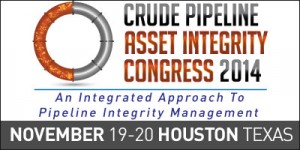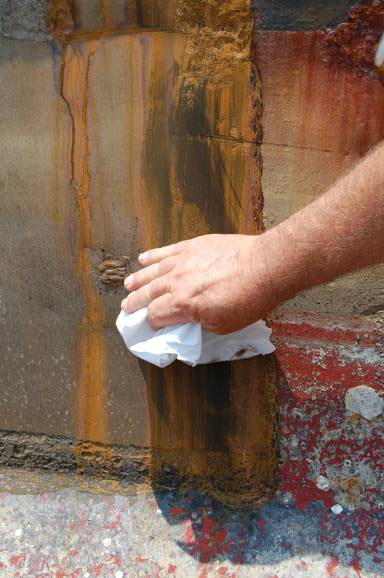Surface Appearance with Surface Area.
Back in the early 80’s, Dr. Lydia Frenzel and myself took a series of water-jet processed steel panels and examined them with a scanning electron microscope. We were hoping to receive confirmation of what our computer models told us; that is, water jetting at or above a threshold pressure produced surfaces with fractal properties. This property, we felt, would explain the observation that coatings over surfaces cleaned with high pressure and ultra high pressure water jetting exhibited remarkably enhanced adhesion values. “. Lydia Frenzel reported this thinking in “L.M. Frenzel and Jonell Nixon, Corrosion89, “Surface Preparation Using High Pressure water Blasting,” paper No. 397, NACE.” However, at the time, few took notice of this microscopic phenomenon or seriously considered that one day water would become “True Grit.”
A dozen or so years later, people are beginning to take seriously what cannot be seen with the eye and what cannot be felt with the finger tip. I think this has partly come about because we and others have been “hammering home” the idea that invisible salts on surfaces are a principle cause of premature coatings failures.
If your marketing arsenal of “reasons why you should use water in surface preparation” lacks punch, you should definitely obtain a copy of the paper by Thomas A Taylor entitled “Surface roughening of metallic substrates by high pressure pure waterjet”. This paper is to be found in “Surface & Coatings Technology”, 76-77,(1995) 95-100. Don’t call me for a copy, we don’t have the rights to reproduce the paper; so order this from your nearest major library.
This paper demonstrates (once again) that pure water jetting can and does produce surfaces which have far greater projected area than abrasive blasted surfaces, and that such area is obtained cleanly ( that is, without disturbing grain boundaries or creating fractures with occluded debris). Furthermore, such phenomenon is observed for threshold pressures as low as 32 Mpa for lnconel and much, much lower for softer substrates.
Surfaces with large areas (compared to projected area) tend to look dark. In fact, as the area of any surface increases, the surface darkens until, if you coat a surface with finely divide carbon particles oust about the ultimate in area), the surface will fail to reflect any appreciable light in the visible spectrum. Bright surfaces mean lots of flat, projected, smooth areas. This is the case of dry abrasive-blasted surf aces which are more like “grooved mirrors” with lots of occluded debris.
This is why we say that water jetted surfaces are more like “true” surfaces. Features as small as grain boundaries are preserved, indicating that, in general, such surfaces are “naturally” less active. While this is not a scientific term, it does describe what we generally mean by “clean”.
Charles Frenzel, At my desk, 1995
In 1995, Taylor, looked at the erosion of Inconel (IN 718) and titanium (Ti- 6AL-4V) with 345 MPa (50,000 psi) pure waterjet. (12) Taylor was concerned about individual droplets and cleaning [removal] of surface oxides from turbine blades. The threshold pressure for IN 718 was determined to be around 207 MPa (30,000 psi), with a velocity around 650 m/sec. This threshold of a water drop velocity threshold is compared to plexiglass at 150 m/sec, and for aluminum at 200 m/sec. Taylor reports “Excellent bonding of a thermal spray overlay was obtained with this surface preparation having an absolutely clean interface.”
“The striking point is that the detail of the eroded surface increases with increasing magnification, suggest the waterjet erosion produces a fractal surface. The highest magnification micrographs show a multitude of granular features of about 2 mm is size and rather micro-faceted. There is no indication of ductile fracture, but there are no long-running cleavage facets indicating brittle fracture either.”
“The structure of the waterjet-eroded surface is compared to the conventional alumina grit blasted surface in Figure 8[in Taylors’s paper] at the same magnification…. The feature size is at least an order of magnitude finer in the waterjet surface. In contrast, the grit-blasted surface would actually appear smoother as the magnification is increased, going from a long-range roughness pattern to smooth plateaus and facets, although there is micro-grooving due to the abrasion of the grit particle. The roughness of the grain blast surface is about 5.3 mm, while the waterjet surface is about 6.0 mm, much the same in magnitude but substantially different in detail.”
Surface Appearance with Surface Area discussion of Taylor paper Frenzel













December 3, 2015
Comments Off on Lydia Frenzel – A Life Devoted to Excellence